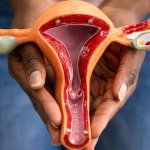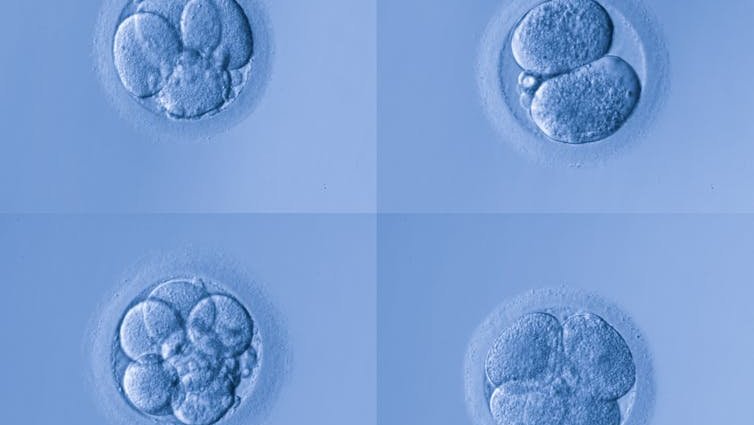In 2020, in a medical facility in one of the southern states of the US, a patient wandered into an unsecured nursery for extremely premature children. Unfortunately, the patient managed to accidentally disconnect multiple babies from their life support. Worried that they would get in trouble, they fled the scene. But by the time the children were found, it was too late. Several had already died.
Of course, this event was extremely distressing for the children’s parents. They subsequently sued the medical facility, but to their astonishment, the state court rejected their case. Had the mothers been pregnant at the time of the incident, they would have had a legal claim for damages. But because the children were in the nursery – outside their mothers’ bodies, the court found that the “wrongful death” statute did not apply.
What should we make of this extraordinary case from the point of view of medical ethics?
Some readers will have realised already that the case above relates to a judgment released by the Alabama Supreme Court earlier this month. The case description reflects the facts, but perhaps I should clarify.
The nursery was not a newborn intensive care unit, but a “cryogenic nursery”. The extremely premature children were not 23 weeks gestation, but embryos three to seven days after conception – smaller than a grain of salt.
The wandering patient had removed the embryos from the freezer and dropped them after burning his hand. In a ruling that many have claimed has disturbing implications for fertility treatment, the court found that the parents in the case could sue the medical facility for the death of their unborn children.
Old laws, new technology
There are different responses that might be made to the Alabama Supreme Court judgment. For example, we might question whether the court should have applied a 150-year-old piece of Alabama law to a late 20th-century reproductive technology. The lawmakers in 1872 clearly did not have a case like this in mind.
The dissenting judge in the case, Justice Cook, argued that when this law was enacted there was no intention for it to be applied to foetuses, let alone embryos.
Alternatively, we might ask how this ruling applies to IVF more generally. IVF providers in Alabama have apparently paused activity, worried that they might become criminally liable if they dispose of unwanted frozen embryos. Many commentators have expressed deep concern about how this ruling might be taken up by campaigners and politicians to further restrict reproductive choice.
But from an ethical perspective, the court did three things that were unquestionably correct. First, it recognised that the parents in this case had suffered a significant loss for which they were owed redress. This loss is more than just a breach of contract. The clinic’s apparent negligence had deprived these parents of future children.
Second, the court recognised that the physical location of an embryo cannot change its intrinsic moral properties. If parents would have had a claim for loss of a five-day-old embryo in the womb, it makes no ethical sense to say that they would have no claim for loss of an embryo that happens to be residing in a freezer.
Third, from a biological point of view, the Alabama Supreme Court was correct to identify these embryos as living human beings, and in so far as they were the genetically unique offspring of their parents – as “children”.
Two meanings of ‘child’
But the problem with the ruling (and with an Alabama constitutional amendment passed in 2018) is the conflation of two ethically distinct meanings of “child”, and hence two different sources of concern.
One sense of a “child” is that of the progeny of parents. Such offspring are (in almost every case) loved and treasured. If a child is harmed or lost it is profoundly distressing to those parents and potentially other family members.
But a second sense of a “child” is of an immature human being, living and growing outside a mother’s body, with a special right to our nurturing, care and protection. If such a child is harmed or dies, there is a significant loss to that child. Even if there were no parents who loved or cared for this child, we should identify this loss as morally significant.
These two different senses of a child can come apart.
The early embryo or foetus is clearly a child in the first sense. Indeed, that is why the parents in the Alabama case have a legitimate claim for damages. However, whether an early embryo or foetus is a “child” in the second sense is deeply contested.
Many philosophers have questioned whether a clump of cells has the same moral status as a six-year-old child or an adult. And indeed most of the wider community, including most religious believers worldwide, share that scepticism. For example, IVF and disposal of unwanted embryos is permitted in Islam because “ensoulment” is not thought to occur until 120 days.
895Studio/Shutterstock
That is why IVF and the use of frozen embryos has been, and continues to be, widely accepted. It is why, in the Alabama case, there were no newspaper headlines at the time, and why there were no calls for criminal prosecution of either the clinic or the wandering patient. It is why the reference to the rights of “unborn children” in conservative laws and rulings is both misleading and mistaken.
There are, of course, different views about when a child (as offspring) becomes a child, with rights and in need of ethical and legal protection.
One problem with laws that refer to “unborn children” is that they simply assume that these two senses of child are the same, when that is open to debate and question. But the other massive problem is that they impose one particular answer to the question, an answer believed by a relatively small number of religious conservatives, on others (religious and non-religious) who do not share that belief. And that is profoundly unjust.
![]()
Dominic Wilkinson receives funding from the Wellcome Trust.











